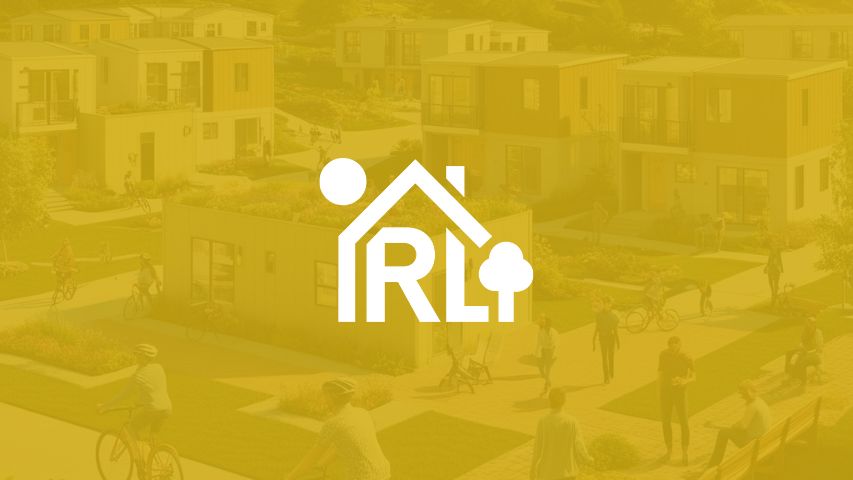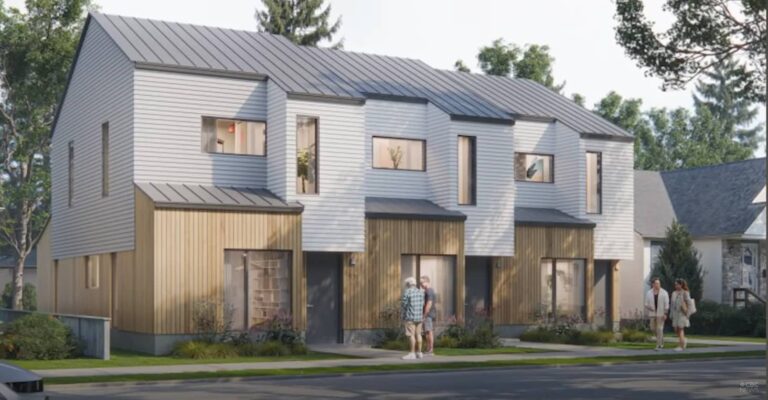
The Urgent Need for Housing Reform in Canada
Canada’s housing crisis has reached a breaking point. Skyrocketing property values, soaring rents, and a growing lack of affordable options have made homeownership and rental stability an increasingly distant dream for many Canadians. As the population continues to grow, the demand for housing outpaces supply, leaving many struggling to find suitable living arrangements. While political leaders debate solutions, it’s clear that a multi-faceted approach is needed to create sustainable, affordable housing at scale.
At ResponsibleLiving Communities, we believe in rethinking housing development through innovative solutions that balance affordability, sustainability, and livability. This article explores practical, high-impact strategies to address Canada’s housing crisis, focusing on smarter construction, zoning reform, workforce expansion, and policy shifts that can unlock housing potential nationwide.
Building Smarter: Faster, More Efficient Housing Development
The speed and cost of construction are two of the biggest barriers to housing accessibility. Traditional methods often take too long and require significant financial investment, which gets passed on to homebuyers and renters. Adopting modern construction techniques can revolutionize the way homes are built in Canada.
Tiny Home Villages: Scalable Solutions for Immediate Relief
One proven approach to addressing homelessness and housing shortages is tiny home villages. These small-scale housing developments offer rapid construction timelines, affordability, and community-focused living.
- Case Study: Gatineau, Quebec – A tiny home village built from repurposed shipping containers now provides transitional housing for over 80 residents, with expansion plans to accommodate 100 people.
- Other Success Stories – British Columbia, Ontario, and New Brunswick have all embraced similar projects, demonstrating how repurposing underutilized spaces can create immediate housing relief.
Tiny homes aren’t just for emergency housing—they can also serve as long-term, sustainable options for cities looking to add affordable rental units and low-cost homeownership opportunities within existing communities.
Transforming Industrial Sites into Housing
Canada has a wealth of unused industrial spaces that could be converted into housing. Large, vacant warehouses, decommissioned factories, and even former military bases represent untapped potential for urban development.
- Example: Downsview Airport, Toronto – A former military and aircraft manufacturing site is being transformed into a mixed-use community with housing for over 50,000 residents.
- Advantages – Adaptive reuse of industrial buildings is faster, more cost-effective, and environmentally responsible compared to new construction.
Cities across Canada should identify vacant sites and create incentives for developers to convert underutilized spaces into housing, adding thousands of new homes without the need for urban sprawl.
Pre-Fabricated and Modular Housing: A Game Changer
Modular housing, built in controlled factory environments, allows for faster, more affordable, and higher-quality housing construction. Prefabricated components are assembled on-site, cutting build times in half and reducing waste.
- Impact – Modular construction can reduce costs by 20-30% and significantly speed up housing delivery.
- Potential in Squamish – As Squamish real estate continues to expand, integrating modular builds into ResponsibleLiving Communities can accelerate housing supply without compromising quality.
Fixing Canada’s Labour Shortage in the Construction Industry
Even when housing projects are greenlit, a shortage of skilled labour often slows development. By 2032, Canada will need to replace 245,000 retiring construction workers. Addressing this workforce gap is essential to keeping up with housing demand.
Encouraging High School Students to Enter the Trades
Introducing apprenticeship programs in high schools can help address labour shortages and offer young Canadians high-paying, in-demand career paths in construction.
- Programs like the Ontario Youth Apprenticeship Program (OYAP) have already proven successful in placing students in construction roles straight out of high school.
- Expanding similar programs across Canada could quickly bolster the labour force and ensure a steady pipeline of skilled workers.
Fast-Tracking Immigration for Skilled Trades
The federal government must streamline the immigration process for skilled tradespeople to help alleviate labour shortages. A dedicated immigration pathway for construction workers could bring in thousands of qualified professionals ready to contribute to Canada’s housing sector.
- Ontario and Alberta have already begun recognizing foreign credentials for trades, allowing immigrants to work immediately without extensive requalification.
- Expanding these efforts nationwide would provide an immediate boost to Canada’s construction industry.
Rethinking Zoning Laws to Unlock Housing Potential
Restrictive zoning laws are one of the biggest barriers to new housing supply. Up to 70% of residential land in major Canadian cities is zoned exclusively for single-family homes, preventing the development of more efficient and affordable housing options.
Legalizing Multi-Unit Housing on Single-Family Lots
One of the most effective ways to increase housing density without urban sprawl is to allow multiplex developments on single-family lots.
- British Columbia recently legalized fourplexes on single-family lots, setting a precedent for other provinces to follow.
- Cities must reassess outdated zoning laws that restrict medium-density developments like duplexes, triplexes, and townhouses.
Utilizing Public Land for Housing Development
Federal and municipal governments own thousands of underutilized land parcels that could be repurposed for housing.
- In 2023, Canada committed to freeing up public land to build 250,000 new homes.
- Cities should establish clear frameworks for transferring public land to affordable housing projects and community-based developments like ResponsibleLiving Communities.
Expanding Rental Housing and Alternative Living Models
Rental supply in Canada is at an all-time low, pushing prices higher and making it difficult for many to find stable housing. Expanding rental housing stock is critical to solving the housing crisis.
Encouraging Purpose-Built Rentals
Instead of relying on investor-owned condos, Canada needs a stronger focus on purpose-built rental housing.
- Developers like Fitzrovia in Toronto are leading the charge, proving that rental-focused housing can be both profitable and sustainable.
- Municipal incentives for long-term rental developments will ensure a steady supply of high-quality rental homes for future generations.
Exploring Co-Living and Shared Housing Models
Co-living communities offer a cost-effective alternative to traditional rentals, providing shared spaces with private bedrooms.
- ResponsibleLiving Communities is pioneering small-scale co-living models with 6-7 suites per dwelling, striking a balance between affordability and social connection.
- Benefits include lower living costs, reduced environmental impact, and better space utilization.
Final Thoughts: A Collaborative Effort for Long-Term Change
Solving Canada’s housing crisis isn’t about one solution—it requires a multi-pronged approach that includes faster construction, zoning reform, workforce expansion, and smarter policy decisions.
At ResponsibleLiving Communities, we are committed to building housing that prioritizes affordability, sustainability, and community-driven design. By embracing modern construction methods, flexible zoning policies, and workforce development initiatives, Canada can create housing solutions that work for everyone.
The question is: Will we act now, or will we continue to push the problem further down the road?



